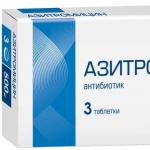Booklet Cheat sheet for parents Sound analysis of words. Next: Sounds Indicating sounds in writing Sounds
Sounds and letters.
Designation of sounds with letters in letters
f ♦ What is the difference between sounds and letters?
AT oral speech words are made up of sounds. In written speech, words are made up of letters. We pronounce and hear sounds, and we write and see letters, we name them. In writing, sounds are designated by letters. Each letter has its own name. In a word housesounds [d], [o], [m], and letters d(de), oh (oh), m(Em).
♦ What is the alphabet, or alphabet? Why is it called that?
The words alphabetand aBCmean the same thing. Word alphabetcomposed of the names of two Greek letters; alpha and vita. ABC- from the names of two Slavic letters: az, beeches.
The alphabet is the letters in order. In the alphabet, each letter has its own place and name.
The Russian alphabet has 33 letters.
ABVGDEOZHZI Y
and be ve ge de e e e ze ze u and
KLMNOP RSTUFKH
ka el em en o pe er es te u f ha
TsChshshch y y yuya
pe che sha schha hard s soft e y ya
sign sign
♦ How does a vowel sound differ from a consonant!
Vowel
When pronouncing, it does not encounter obstacles: [a], [o], [and], [s], [y], [e].
A vowel sound forms a syllable: lesson,vegetables.
Consonant
1. When pronouncing, meets an obstacle: lips, teeth, tongue,
Forms a syllable only together with a vowel: country, mu-zey.
♦ How many basic (stressed) vowel sounds in Russian!
There are six vowel sounds in stressed syllables: [o], [and], [s], [y], [e]. ;
♦ How many vowels are there in the Russian alphabet!)
There are ten vowel letters in the Russian alphabet:
[a, € j e,oh oh uh uhs, yu, i.
Not all vowel sounds of Russian speech can be designated by letters and,oh and, s,uh, uh. Letters her,yu, i serve to indicate the softness of consonants and to indicate vowel sounds: ball- [m "a] h, luke- [l "y] k" and in some words - two sounds at once: anchor- [ya] kor, southern- [yu] life, hedgehog- [yo] zhik. Therefore, the Russian alphabet has 10 vowels.
♦ What is a syllable!
Syllables are the parts of a word into which it is divided during pronunciation: vё-ter, yes-yes,rain, edge.
♦ How to find out how many syllables are in a word!
There are as many syllables in a word as there are in it voicethosesounds: house,
u-cheb-nick, new.
♦ How to wrap words!
Word wrap rules
The word is carried over syllables: peaceful.Word , consisting of one syllable does not carry over: day, I sew, weave.
One letter cannot be left on a line or transferred to another: walking, standing,Julia, language.
Letters ь, b, thwhen hyphenating, a word cannot be separated from the letter in front: pis-mo,build, entrance.
When hyphenating words with double consonants, one consonant remains on the line, and the other is wrapped: cash-sa, collection.
♦ When vowels e, e, yu, i mean two sounds?
Letters e, e, y, iin stressed syllables, they denote two sounds - the consonant sound [y] and the vowel sounds [e], [o], [y], [a]: e \u003d[yeh], e\u003d [yo], yu- [yo]; i\u003d [ya] in the following three cases:
at the beginning of a word: spruce- [& e] l\u003e Christmas tree -[yo] lka, young- [yo] nd, berry- [& £ \\ years;
after vowels: sing- by [yo] t, stand- hundred [ya] t, we sing- by [yo] m;
after dividing soft and hard signs: friends- druz [ya], blizzard -in [yau] ha, entrance - entrance [ye] bld, riserise [yo] m.
♦ When letters e, e, yu, i indicate the softness of a consonant sound and a vowel sound! f
Letters e, e, y, iafter a consonant sound; denote the softness of this consonant sound and the vowel sound: ball- [m "a] h, light- \\ wow [n * o \\ k, bouquet- boo [k "e] t, people- [l "y] di,guys- re [b "a] ta.
[♦ How is hardness and softness of consonants in the middle of a word indicated in writing?
The hardness of consonants is indicated in writing with vowels a, oh, y, s, eh: music, school, mayor.
The softness of consonants is indicated by vowels
e, e, u, u, iand a soft sign (b): earth, eagle, people, fingers.
In the middle of the word, the softness of the consonant sound [l " ] is always indicated by a soft sign: rails, soap dish.
The softness of other consonants may not be indicated by a soft sign: a life- a life,there is - f [s "] be, if - f [s"] whether, Nastya- \\Us" ] cha, song- ne [s "] nya, guest- go [s "] тъ,worm - che [p "] in.The spelling of such words must be checked against the dictionary.
♦ howdenotes the softness of a consonant sound on the endthe words?
Onthe end of a word, the softness of a consonant sound is indicated by b: notebook, day, portfolio,here, pigeon, September.
The softness of hissing consonants h, wat the end of words, a soft sign is not indicated: doctor, comrade.
Soft mark at the end of words speech, thingand the like does not indicate the softness of hissing consonants h, n.It is indicative of the feminine gender of these nouns. 
The soft sign at the end of the 2nd person verbs does not mean the singular softness of a consonant, sound, but it is always written: what are you doing? what will you do runningwrite.
♦ Which hissing consonants are always hard and which are always soft!
[f], [w], [c] - always solid hissing consonants;
[h *], [uh "] are always soft hissing consonants.
♦ Which vowels are not written after hissing w, w,h, uh?
After letters w, gi,h, uthe letters y, y, i are not written. Combinations zhi, shi, cha, schu, chu, schu
written with letters and, a, y:
live, happiness, wonderful,
to sew, food, pike.
Exceptions: jury, parachute, broshura.
In combinations zhi, shiin stressed syllables, the letter is always written and: error, resident.
AT unstressed syllables vowels need to be checked: six- sixth, wool- woolnoah,but breadth- wide.
♦ What is the peculiarity of writing combinations chk, chn, thu?
In combinations chk, chn, thuno soft sign is written: pen, girl, point, fabulous,sandy, milky, mail, what.
♦ When the separator is written soft sign (b)?
Dividing bwritten after consonants before vowels e,e, u, u, i, if the sound [th] is heard in the words: jam, housing, sparrowoh,in the fall, wings.
dividing softness index
consonants
letter happiness
salt viet
ice floe nightingales
beast blizzard
radish monkey
♦ What is the difference between voiced and voiceless consonants?
Voiced consonants are pronounced with voice and noise.
Deaf consonants consistjust out of noise.
♦ What are the consonants the soundsarepaired in voicing, and which unpaired?
There are paired and unpaired consonants in Russian.
Paired consonants
hard soft
voiced: [b] [c] [d] [d] [g] [h] [b *] [c "][z *] [d "] [z" W
deaf: [n] [f] [k] [t] [w] [s] [n "] [f"][k *] [t\u003e] [s "]
Unpaired consonants
voiced deaf
[l] [m] [n] [p] [l "]. [m"] [n "] [p"] [y] [x] [x "] [c] [h\u003e] [u"]
♦ Why do words with a double-voiced consonant at the end need to be checked?
At the end of a word, a paired voiced consonant is replaced by a paired voiceless. Therefore, words with a paired consonant at the end must be checked: bread, train, nail, circle, hook.
♦ What words are test words?
Words in which a vowel is pronounced after a paired consonant are test: cities- city, flags- flag.
♦ How to check the paired consonant at the end of the word "
To check paired consonants at the end of a word, you need to change the word so that a vowel sound is heard after the consonant: siskin- chiwell, ruff- ruffs.
♦ Which vowel sounds are called stressed and which are unstressed!
Vowels in stressed syllables are called stressed, and vowels in unstressed syllables are called unstressed.
Vowels in stressed syllables are otherwise called vowels in a strong position. Vowel sounds in unstressed syllables are otherwise called weak vowels.
When we speak, we make sounds. They are formed as a result of the movement of air from the lungs through the mouth and, depending on how the tongue and lips are located at this moment, they have a different color.
The sounds of speech are involved in the formation of words - linguistic units that have a certain semantic meaning and are used for the communication process. Let's take a closer look at them!
What are letters and sounds
Everything that we hear and pronounce is sounds. They are indicated in a certain way in writing, and what we write and then read are letters.
But the sounds of speech and the letters with which they are designated, in Russian, differ greatly in number. In oral speech, we pronounce 43 basic sounds, but we use only 33 letters to write them.
That is, all the letters of our language can be divided into 3 groups.
- Letters that do not indicate sounds (these are "b" and "b"). As an example, you can give: "stump", which is pronounced [p'en´], and "move out" - [sy'ehat´].
- Letters representing 2 sounds. These letters include "e", "e", "yu", "i". In their pronunciation, a pair of sounds is used: [y'o], [y'e], [y'y], [y'a].
- Letters that denote 1 sound (these are all other letters).
What is the difference between vowels and consonants
There are two main groups of speech sounds - they are defined as Vowels are those sounds in which only the voice is involved. They are pronounced lingeringly, the sound does not meet any obstacles in the mouth.
Consonants are what we pronounce, combining both voice and noise (they are called voiced) or just noise (voiceless consonants). In addition, consonants can be either hard or soft. 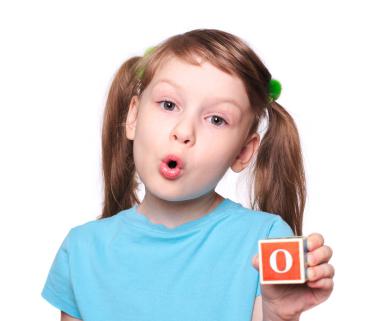
Stressed and unstressed syllables
Vowel sounds of speech are involved in the formation of syllables, while being stressed or in an unstressed position. Stress means pronunciation of a syllable with greater strength.
A change in the position of stress is inherent in the Russian language. It can appear in any syllable, unlike Polish or French, where a certain place is assigned to it. For example, in the word "whistle" the stress is on the first syllable, and in the word "whistle" - on the second.
What letters are used for vowel sounds in Russian?
To designate the main vowel sounds of speech (in our language there are six), use ten:
sound [and] - denoted by the letter "and" (tiger);
[s] - with the letter "y" (smoke);
[a] - with the letters "a" (mother) and "I" (pit);
[o] - with the letter "o" (nose) and "e" (hedgehog);
[e] - with the letter "e" (echo) and "e" (day);
[y] - with the letter "y" (kum) and "yu" (south).
Thus, it turns out that in order to designate 4 vowel sounds ([o], [a], [e], [y]) in the alphabet there are two whole rows of letters. It can be:
- a, oh, uh, y;
- i, e, e, y.
In the second row, the letters perform two functions at once. They not only denote but also signal that the previous consonant was soft (mel - [m'el]).
If they appear at the beginning of a word, are placed after vowels or after a soft or hard separating mark, they denote a combination of sounds. For example, the word Christmas tree sounds [y'olka], and the word sings - [pay'ot]. 
As indicated in the letter
Speech sounds are involved in the formation of words and are there in a weak or strong position, which often has a direct impact on their designation in writing. So, the same letter in the language can denote different sounds. Example: the letter "n" can denote 2 sounds - [n] and [n´]: niche - [n´isha] or nyl [nyl].
And one letter "b" can denote 4 variants of sounds [b], [b´] or [n], [n´]. For example: was [was] - beat [b´il] or hump [gorp] - Ob [op´].
If a voiced consonant is written at the end of a word or is located in front of voiceless consonants, then it can denote its own paired voiceless sound. This position is called weak. Pay attention to how we pronounce: kadka - ka [t] ka (the sound is in front of a voiceless consonant) or the eye - gla [s] (the sound is at the end of a word). This process is defined as stunning.
Voiceless consonants can sound like their paired consonants - voiced if they are in a strong position. For example: threshing sounds like molo [d´] ba, and in the word request you can hear the sound [z´] - about [z´] ba. This, as you know, is voicing.
It should be mentioned that the position of consonants before vowels or before voiced consonants is considered a strong position in Russian. 
How some consonants are indicated in writing
Some sounds of Russian speech are indicated in writing by a combination of letters. By the way, this situation causes a very large number of spelling errors.
For example, one sound [Щ´] in a written word may look like mid-range, zch or zh. We write - an account, but we pronounce [sh'ot], we write - a cab, but we say [izosch'ik], we write - a man, but it sounds like [musch'ina].
And the sound [ts] can be designated both as a combination of tts or dts, and as ts or ts. For example: read - read [ts] a, twenty - two [ts] at.
Letters do not always correspond to "their" sounds
As already mentioned, the sounds of speech are involved in the formation of words and are indicated in writing by certain letters. And it often turns out that different sounds can "hide" behind one letter. For example, at the root of a word, when we change its number, we write the same letter, but at the same time pronounce different sounds: stol (st [o] l) - stol (st [a] ly). That is, with one letter "o" we designate two sounds: [o] and [a].
But there are cases when different sounds are indicated by one letter. So, both in the word "treasure" and in the word "raft" the same sound [t] sounds at the end, but it is designated, as you can see, by different letters: "d" and "t".
The letter composition of words often does not coincide with the sound one. For example, the word “valiant” has ten letters, but only nine are pronounced: [valiant]. In this and similar cases, the letter "t" is an unpronounceable consonant. That is, a letter that does not denote sound. Here are a few more examples of such letters: the sun is [sonce], the heart is [s'ertse].
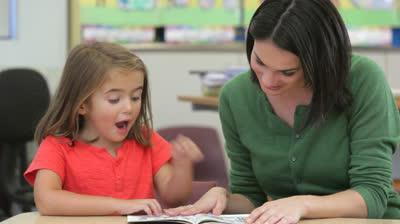
Features of the combination of consonants and vowels
Hard Russian speech is not combined with the vowel "and" following them, and soft cannot be combined with "s". For example, in the word "dinner" always solid sound [g] requires the sound [s] so we pronounce [uzhyn].
In some cases, there is a softening in speech of hard consonants paired with a soft one. So, if in the word carriage, the sound [n] is hard, then in combination with the always soft [h´] it sounds soft - wagon [car'ch'ik].
The same happens in situations with a combination with other soft consonants: fant - fa [n´t´] ik, les - le [s'n´] ik, pure - chi [s't´] it.
The use of solid and in Russian
The sounds of speech and letters in our language, as you probably already understood, often do not coincide. So, for example, a hard and soft sign in writing does not mean any sounds.
These letters, as a rule, signal that the e, e, i, y standing behind them are pronounced as two sounds (drinks [n'ot]). If b is after a consonant, then it indicates its softness (day [d'en]).
In some cases, the soft sign plays only a grammatical role. For example, in the word "lie" it does not indicate the softness of the preceding consonant, but only indicates that the given noun belongs to the feminine gender. 
Features of the spelling and pronunciation of some loan words
In some words borrowed from other languages, before the letter e, there is not a soft one, as is customary in Russian, but a hard consonant. Pay attention - in the word "tempo" we write e, but at the same time we pronounce a solid sound [t]. The pronunciation of this and similar words must be memorized or referred to an orthoepic dictionary.
Kashne - [ne], model - [de], claim - [te], relay - the first syllable [re], dash - [re], test - [te], thermos - [te], tennis - [te].
As you can see, the sounds of speech (grade 1 or 11 left behind) is a deep and serious topic that, if carefully studied, will help you understand the intricacies of the pronunciation rules and the principles of writing many difficult words. Good luck!
MBDOU MO Krasnodar
"Kindergarten number 163"
Sound analysis of words.
"Cheat Sheet for Parents"
Tryaskovoy T.S.
for parents
Dear Parents!
Teaching your child to read and developing phonemic hearing, it should be remembered that:
Our speech consists of sentences.
A sentence is a complete thought.
Sentences are made up of words.
Words are made up of syllables. There are so many syllables, how vowels letters (sounds), for example: ma/ whether / on - in this word 3 syllable, since it has 3 vowels (sound).
Words are made of sounds.
Sound is what we hear and say.
The letter is what we write and read.
The sound in writing is indicated by a letter.
Sounds are vowels and consonants.
Vowel sounds are sounds that can be sung with a voice (higher-lower), while the air leaving the mouth does not meet an obstacle.
There are six vowel sounds in Russian: A, U, O, I, E, Y. On the diagrams, vowel sounds are indicated in red. There are ten vowels: six - A, U, O, I, E, Y - correspond to sounds and four - iotated, which denote two sounds: I, Yu, E, E, (I - YA, Yu - YU, E - YE, YO - YO) at the beginning of the word (yama, yula); after a vowel sound (beacon, za-yushka); after soft and hard signs (family, rise). In other cases (after consonants), iotated vowels indicate the softness of the consonant sound in front of the letter and a vowel sound: I - A. Yu - U, E - E, E - O (birch, ball). The vowels A, O, U, Y, E in writing denote the hardness of consonants.
Consonants are sounds that cannot be sung, because the air leaving the mouth when they are pronounced meets an obstacle.
Deafness and voiced consonant sounds are determined by the work of the vocal cords and are checked with a hand placed on the throat: deaf consonants - vocal cords do not work (the neck does not tremble): К, П, С, Т, Ф, X, Ц, Ч, Ш, Щ; voiced consonants - the vocal cords are working (the throat is trembling): B, C, D, D, F, 3, Y, L, M, N, R
Always voiced (unpaired) consonants: Y, L, M, N, R. Always voiceless (unpaired) consonants Х, Ц, Ч, Щ. The rest of the consonants form pairs:
B C D E F H - CALLS
P F K T W S - DEAF
The hardness and softness of consonants are determined by ear:
consonants sounds that can be hard or soft: B, C, D, D, 3, K, L, M, N, P, R, S, T, F, X, Bb, Bb, Gb, Db, Zb, Kb, L, Mb, Hb, Pb , Pb, Cb, Th, Fb, Xb;
is always hard consonants: F, W, C;
is always soft consonants: Y, H, Sch.
Hard consonants on the diagrams are indicated in blue, soft ones - in green.
One of the important tasks of preparing for literacy training is to familiarize children with the sound composition, the sound structure of the word. The initial principle of the preschool literacy system is that the child's acquaintance and work with letters should be preceded by a pre-literary, purely sound learning period. The letter is the sign of sound.
Acquaintance with an alphabetic sign will be ineffective if the child does not know what exactly is indicated by this sign. The pre-literary stage of learning to read and write takes a lot of time and effort. But one should not strive to reduce it - after all, the success of the further formation of the reading skill depends on the pre-literary stage of learning. If, even in the pre-literary period, the child learns to freely switch from a hard consonant sound to its soft pair and back, then the most difficult step will not cause difficulties for him later primary education reading - merging two letters into a syllable. Knowing letters without a sense of sounds is the same as knowing the names of colors with color blindness. And it is no coincidence that children with an excellent memory and slightly ambitious parents sometimes recognize and name all the letters by the age of two, but even by the age of seven they do not begin to add them, unless they first get acquainted with the sounds. Successful development speeches in preschool age is crucial for the subsequent systematic study of the mother tongue. D.B. Elkonin wrote that the reader operates with the sound side of the language, and reading is the process of recreating the sound form of a word according to its graphic (letter) model. Hence the need for the preliminary acquaintance of children with a wide sound reality. A child is surrounded by many sounds: music, chirping of birds, rustle of grass, sound of wind, murmur of water ... But word sounds - speech sounds - from the very birth are the most significant.
Sounding speech provides the communication with adults necessary for the child, obtaining information, familiarizing with activities, mastering the norms of behavior. The purity of speech depends on many factors: on the development of speech hearing, speech attention, speech breathing, vocal and speech apparatus.
Teaching children to analyze the sound of words begins with determining the sequence of sounds in it. It is necessary to select a sequence of sounds by repeatedly pronouncing a word with sequential intonation highlighting each sound. So, when analyzing the word beetle, the child must pronounce it three times:
zhzhzhuk, zhuuuk, bug.
Children cannot master sound analysis just by speaking words out loud. It is necessary to show them the word in detail, presenting its sound structure as a model.
The picture-diagram of its sound composition makes it possible to really represent the word. A drawing-object is placed on it, the name of which the child must make out and a row of cells under the drawing, which are sequentially filled with chips.

The word model, which is obtained as a result of sound analysis, reflects individual sounds and their sequence. When carrying out sound analysis, the child leads with a pointer under the diagram and, in accordance with the movement of the pointer, pronounces a word with successive selection of sounds, designating each of them with a token.
Familiarization with vowel sounds.
Children will learn that the sounds, during the formation of which the air passes freely, nothing "interferes" with these sounds - neither teeth, nor lips, nor tongue are called vowels. Children find such sounds in previously analyzed words: mac- [a], bow- [y], dom- [o], les- [e], whale- [i], smoke- [s]. To make sure that their conclusions are correct, children “check” all sounds by pronouncing them, and observe if anything in the mouth interferes with their pronunciation. We denote vowel sounds with a red token.
|
[g] [y] [s] [and] |


Acquaintance with hard and soft consonants.
Sounds, during the formation of which the air does not pass freely, encounters obstacles, something "interferes" - lips, teeth, tongue, are called consonants. A solid consonant sound will be denoted by a blue chip,and a soft consonant is a green counter.
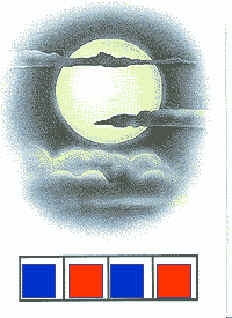
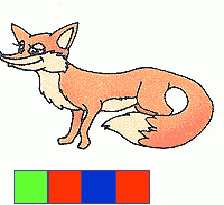
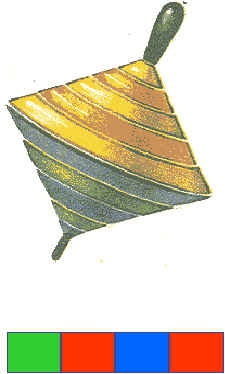

Acquaintance with stressed vowel sound.
After the pupils learn to distinguish between vowels, hard and soft consonants, it is necessary to introduce them to the stress, to teach them to highlight the stressed syllable and the stressed vowel sound in a word.It is better to start learning how to isolate the stressed syllable with two-syllable words with stress on the first syllable (bear, porridge), then move on to words with an accent on the second syllable. Learning the ability to isolate word stress is included in the work of conducting sound analysis. Following the stressed syllable, children get to know the stressed vowel sound. To denote the stressed vowel sound, a black counter is used.
Execute sound analysis words of GUSI

What are the vowel sounds? ([y], [and])
How many syllables are in a word? (Two)
Name them. (GU-SI)
What is the stressed syllable. (GU)
Pronounce the word with emphasis. (GUUUSI)
In a stressed syllable, a vowel is pronounced. (UUU)
We read the word with stress, moving the pointer under the diagram.
An adult pronounces HUSII.
What sound is highlighted? (AND)
How to say it correctly? GUUUSI.
A vowel sound in a stressed syllable is called stressed, which is pronounced more drawn out.
It is important that the child learns what the sound of speech is, can differentiate sounds, divide words into sounds and syllables. Only then can he easily master the skill of reading.
Letters are a graphic symbol of sounds. We often come across the fact that children are taught to read letter by letter, i.e. children, seeing a letter, pronounce its name, not a sound. The result is "keote" instead of "cat". Children hardly delve into the rules for voicing letters and letter combinations. This creates additional difficulties in teaching children to read.
In the teaching method of reading in kindergarten provides for the naming of letters by their sound designations: п, б, к…. This makes it much easier for children to master the reading skill.
When pronouncing alveolar occlusive consonants [n, l, t, d], the tip of the tongue touches the alveoli (tubercles behind the upper teeth). These sounds are not softened before vowels or at the end of a word. To avoid unwanted vowel sounds, you do not need to press the tip of the tongue hard and hold it for a long time on the alveoli. The voiceless consonant [t] at the beginning and end of words is pronounced energetically. In Russian, such sounds are pronounced by touching the tip of the tongue of the upper teeth, and not the alveoli. Compare:
[n] - [n] no - net (grid) [l] - [l] forest - less (less) [t] - [t] type - tip (tip) [d] - [d] gave - dull ( boring)
In writing, the sounds [n, l, t, d] are respectively designated by letters: Nn [en], Ll [el], Tt [ti:], Dd [di:]: net, less, tip, dull.
Sounds [s, z]
The English consonants [s, z] are called slit consonants, because when they are pronounced, a gap is formed between the tip of the tongue and the alveoli through which air passes. When pronouncing English slit sounds [s, z], the tip of the tongue is raised to the alveoli, but does not touch them. The voice travels through a gap between the alveoli and the tip of the tongue. When pronouncing Russian slotted consonants, the tongue is located at the base of the lower teeth.
Compare:
In writing, the sounds [s, z] are indicated by: - \u200b\u200bletters Ss [es]: some, start, Zz [zed]: zebra, Zena - letter combination ss [dʌbl es]: less - with a letter Cc [si:] before vowels e, i, y: center, city, cycle.
Compare Russian and English consonants:
|
English |
English |
|||
Sound [e]
When pronouncing the short vowel [e], the tip of the tongue is at the base of the lower teeth. The lips are slightly stretched. The English sound [e] is similar to the Russian sound [e] in the words "these, chains". Before voiceless consonants [e] is pronounced very briefly, and before consonants [n, l, m] it is noticeably lengthened.
Compare the pronunciation of Russian and English words.
When pronouncing the sound [e], be guided by the sound [e] in the words "these", "chains".
[bed] trouble - bed (bed) [beg] run - beg (beg) [les] forest - less (less) [spel] sang - spell (spell) [net] no - net (network) [smel] bold - smell (smell) [test] test - test (test, test) [tekst] text - text (text)
This is how [e] sounds in english words.
[pen] pen - pen [desk] desk - desk [bed] bed - bed [tekst] text - text [lesn] lesson - lesson [nekst] next - next [end] end - end [tent] tent - tent
In writing, the sound [e] is indicated by the letter Ee [i:] if it is followed by one or more consonants: pen, bed, tent, egg, desk, end, next.
Sounds are encoded in writing by letters. For example, the sound [a] is denoted in writing by the letter I in the word ball and the letter a in the word cancer.
In modern Russian, there are 10 vowels, 21 consonants and 2 letters that do not denote sounds.
In the outline of letters there are 4 varieties: printed and handwritten, each of which can be uppercase and lowercase. The difference between print and handwritten letters is related only to the writing technique, and uppercase and lowercase differ in lexical and syntactic meaning.
Taking into account the functions, the letters are divided into vowels: uniotated, which serve as a means of denoting the hardness of consonants (a, o, y, e, s), and iotated, used to encode softness (i, e, u, e, u), consonants: paired by hardness-softness (15 pairs) - b, c, d, d, h, k, l, m, n, p, p, s, t, f, x and denoting unpaired solid - w, w, c and unpaired soft - h, n.
Different letters can denote one sound: [water] and [here] - sound [t]. One letter can mean two sounds: the letters i, ё, e, u after vowels - [maya], at the beginning of the word - [yabl'k], after separating signs - [l "iot].
The letter may not represent sound. These are b, b.
In addition to the principles mentioned above, the syllabic principle also operates in Russian graphics.
In writing, paired hard and soft consonants and the following vowels are mutually conditioned: on the one hand, the character of the consonant phoneme determines the following vowel for the writer; on the other hand, it is important for the reader to consider the vowel following the consonant. Thus, the unit of writing and reading in Russian is not a single letter, but a syllable. The syllabic principle of Russian graphics is used to designate paired hard and soft consonants that have one row of consonant letters, in contrast to paired voiced and voiceless consonants, which have two rows of consonants: b-p, v-f, etc.
The softness of consonants in writing is indicated by the letters ь (stump), I, e, ё, yu, and (row, chalk, mel, luke, vit), the hardness of consonants in writing is conveyed by the letters o, e, y, s, a (glad, bow, son, sleep).
The sound nature of our writing determines the greatest optimality of the sound method of teaching literacy. The sound method takes into account the sound laws of the Russian language more fully than others. First of all, this is expressed in the order of studying sounds and letters, in the sequence of introducing syllable structures, in the choice for the initial reading and writing of those syllables, the sounds of which are mostly in a strong position and therefore have the simplest relationship with letters.
Thus, a phoneme in Russian can be represented by one or several sounds, which are its allophones. In the first grade, the child should get a clear idea of \u200b\u200bthe sound composition of the Russian language and the system of encoding sounds in writing.
1.3 Pedagogical conditions effective teaching of first graders to read and write
The didactic principle is defined in pedagogy and methodology as the main starting point of the learning process. This provision is formulated on the basis of objectively existing laws that constantly manifest themselves in teaching children any subject. As a generalization of the identified patterns, the principles become a guide to action. The more objectively both general didactic and methodological regularities are traced, the more effective is the influence of principles on the learning process.
The methodology, as a rule, is considered as a branch of didactics: the latter studies the general laws of teaching, the methodology is private. Hence such concepts as linguodidactics, language didactics are a fundamental part of the methodology. The methodology considers many didactic concepts through the prism of its subject: the principles of didactics, methods, lesson, etc. For example, the principle of scientific character and accessibility in didactics is formulated in a general way, and methodologists find such forms of presentation grammatical material children so that he does not lose his scientific character, but he becomes understandable junior schoolchildren... In a similar way, the principles of visualization, developing learning are interpreted in the methodology; the methodology finds the optimal relationship between theory and practice, in its own way uses the methods proposed by didactics: conversation, exercise, teacher's story, observation, analysis and synthesis (for example, analysis - grammatical analysis, synthesis - text construction).
A lesson is a didactic concept, but there are no lessons outside the academic subject: a huge variety of lessons literary reading, grammar and spelling, composition, calligraphy is provided again by the method.
Didactics together with educational psychology put forward learning concepts that ensure educational progress. Thus, a study of the history of the prevailing methods shows a tendency of gradual cognitive activity and student autonomy. Didactians M. N. Skatkin and I. Ya. Lerner developed the following typology of teaching methods, taking as its basis the degree of cognitive activity of schoolchildren in the educational process:
1. Dogmatic methods: the material is memorized without compulsory understanding.
2. Reproductive: the material is not only memorized, but also reproduced.
3. Explanatory and illustrative: the material is explained, illustrated by examples, demonstrated and must be understood by students.
4. Productive methods: the material should not only be understood, but also applied in practical actions.
5. Heuristic, partial search methods: individual elements of new knowledge are obtained by the student himself through purposeful observations, by solving cognitive problems, conducting an experiment, etc.
6. Problem methods: the ability to understand the problem, and in some cases - and to pose it, to contribute to its solution.
7. Research methods: highest level cognition approaching the activity of a scientist, but in a conditional way of subjective-creative tasks (new scientific knowledge subjectively new only for the student playing the role of a researcher).
The highest levels in this typology (methods 5-7) introduce a creative element into the student's activity through the accumulation of material, its comprehension, generalization: new knowledge is independently derived. Applying higher-ranking methods over a number of years of study provides mental development. According to M.N. Skatkin (1971), the twentieth century is the century of mastering search methods, although explanatory and illustrative methods prevail numerically.
It is easy to see that psychological and didactic approaches are aimed at developing learning. Despite the difference in psychological concepts, they all proceed from the teachings of L.S. Vygotsky, who argued that learning is ahead of development; in the methodology, this idea has been fixed since the time of K.D. Ushinsky; the latter wrote: "The formal development of reason is a non-existent phantom. Understanding develops only in real real knowledge." Those. through the subject, through its concepts, connections, laws, rules, systems.
Thus, literacy lessons should take place in a clear system and comply with the basic general didactic principles: visibility, scientific character, accessibility, consistency and developmental orientation of education.


